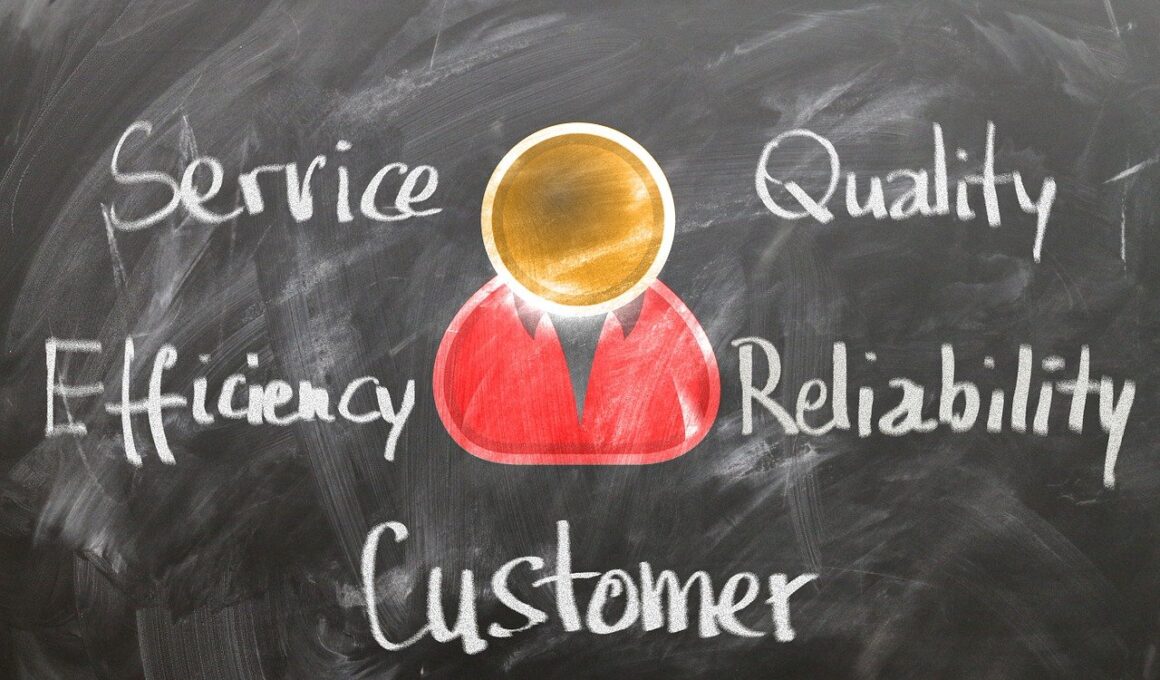How to Communicate Customer Retention Policies Effectively
Communicating customer retention policies effectively is crucial for businesses aiming to build loyalty and trust with their customers. Understanding your customers’ needs and preferences can significantly enhance how these policies are presented. First, ensure that your policies are clearly written and easily accessible. Use simple language that is free from jargon to cater to a diverse audience. Additionally, placing these policies on your website can provide customers with convenient access and a reference point. Visual aids like infographics or flowcharts can simplify complex information. When crafting your message, consider the medium: emails, social media, and in-store signs can each convey the message differently. It’s essential to train your staff on these policies to ensure consistency in communication. Providing a FAQ section can also preemptively address common customer inquiries. Make sure to regularly update the policies based on feedback and changing market trends. Transparency builds trust, and when customers see that you are responsive to their needs, they’re more likely to remain loyal. Incorporate customer testimonials showcasing satisfaction from policies to further bolster retention efforts, making your approach more relatable.
Another critical aspect of effective communication involves engaging with customers directly regarding your policies. Encourage open dialogue through surveys or feedback forms to gather thoughts on your customer retention initiatives. This engagement helps identify areas needing improvement and shows customers that their opinions are valued. When initiating discussions, utilize clear, concise messaging that outlines the goals and benefits of your retention policies. It’s also beneficial to personalize communication. By addressing customers by name and referencing their specific circumstances, you foster a connection that feels more genuine. Utilizing various communication channels, such as newsletters or podcasts, can expand your audience reach. Regular updates on any changes to policies help maintain transparency and keep customers informed. Furthermore, consider hosting informational webinars or workshops where customers can learn about these policies in an interactive environment. Engaging customers through these activities not only improves understanding but also creates a community around your brand. Remember, the goal is to cultivate an environment where customers feel involved and empowered, thereby enhancing their overall experience and loyalty to your brand.
Using Social Media for Policy Communication
Social media is a powerful tool to communicate customer retention policies effectively. With millions of users, platforms like Facebook, Instagram, and Twitter provide a real-time communication channel that can reach a vast audience. Create short, engaging posts that encapsulate the core message of your policies. Visual content, such as videos or graphics, can capture attention more effectively than text alone. Interaction is key—prompt customers to comment or share their experiences with your policies, which not only enhances visibility but also builds community. Regularly update followers about any changes or enhancements to these policies, ensuring they stay informed. Consider using stories or live videos to provide real-time updates, making the information more relatable and engaging. Creating events around your policy launch can further involve your audience and generate excitement. Additionally, leverage user-generated content where satisfied customers share their experiences about your retention policies, enhancing credibility. Acknowledging feedback, whether positive or constructive, demonstrates your commitment to improving customer relations, ultimately driving retention and reinforcing brand loyalty.
Another effective strategy for communicating customer retention policies is providing extensive training to employees. Your staff is often the face of your brand and must understand retention policies in-depth to convey them accurately. Regular training sessions can equip them with the knowledge needed to answer customer inquiries confidently and address concerns swiftly. Additionally, create easy-to-use resources, such as cheat sheets or one-pagers, that summarize key policy details for quick reference. Encouraging role-playing exercises can also prepare employees for real interactions, making them feel more competent. Ensuring that your staff is well-informed and enthusiastic can lead to better customer interactions that align with your retention strategies. Furthermore, fostering a culture where employees feel empowered to share customer feedback with management can help create a two-way communication channel. This feedback may inform future adjustments to retention policies, making them more customer-centric. Thus, investing time in employee training not only improves performance but can directly impact customer satisfaction. A knowledgeable and confident workforce can communicate policies in ways that resonate with customers, leading to enhanced trust and loyalty.
The Role of Transparency in Retention Strategies
Transparency is vital to effectively communicating customer retention policies. When customers are well-informed about what to expect, it cultivates trust and encourages long-term loyalty. Begin by openly sharing the rationale behind your policies. Customers appreciate when they understand why certain rules or benefits exist. This openness can help mitigate misconceptions that could arise from ambiguous language or hidden stipulations. Ensure that all documentation regarding your policies is accessible, whether in physical or digital formats. Highlight any changes made to policies clearly, allowing customers to see that their needs are being prioritized. Engage in dialogue through customer service channels to clarify any misunderstandings in real-time. Consider writing blog posts that elaborate on various aspects of your policies, fostering community engagement and loyalty. Encouraging customers to ask questions shows that you value their input, further enhancing their attachment to your brand. By prioritizing transparency, you not only create a more informed customer base, but also invite feedback, aligning your policies with the needs and expectations of your customers, ultimately enhancing retention.
In addition to transparency, consistency in communication is paramount for reinforcing customer retention policies. Customers should receive the same message regardless of the platform—whether they interact through social media, email, or in-store experiences. There’s a definite power in repetition; conveying the same core message consistently helps solidify understanding. Consider drafting a communications calendar to ensure policies are discussed regularly, across various channels, to keep these principles top-of-mind for customers. Furthermore, utilizing customer relationship management (CRM) tools can facilitate personalized messaging based on individual customer journeys. These tools can automate reminders and push notifications regarding policy updates or renewals. Building all messaging around core values establishes credibility. Engaging storytelling that aligns experiences with your retention policies can create memorable touchpoints. Other promotional strategies might involve showcasing real-world examples of satisfied customers benefitting from the policies. This approach emphasizes real outcomes, making your communication more relatable and persuasive. Thus, consistency not only reinforces the message but ensures that customers feel informed and valued, driving long-term loyalty.
Evaluating Feedback for Policy Enhancement
Finally, a continuous feedback loop is essential for improving customer retention policies. Gathering feedback regularly enables businesses to understand the effectiveness of their communication strategies. Implement regular surveys to assess customer satisfaction regarding retention policies. Offering an incentive for feedback can also boost responses and provide richer insights. Analyzing this data allows companies to make informed adjustments to their policies, ensuring they align with customer needs. It’s important to communicate any changes that stem from customer feedback as this helps customers feel heard and valued. Highlight these changes in your newsletters or social media to showcase your dedication to enhancing their experience. Moreover, sharing customer success stories can further illustrate how feedback influences policy improvements. Hosting town hall meetings can provide a platform for direct dialogue, demonstrating your commitment to customer engagement and satisfaction. By utilizing customer feedback, businesses can refine their retention strategies methodically. This ensures that customer policies not only remain relevant but also resonate more effectively with your audience, establishing a sense of loyalty and connection.
In conclusion, effective communication of customer retention policies is an evolving process that requires a multifaceted approach. It is vital to engage your audience through various channels and methods in order to keep your policies relevant and visible. Fostering transparency, consistency, and open dialogue can significantly impact how customers perceive these policies, thereby influencing their loyalty. Ensure your employees are well-equipped to convey these policies accurately, providing them with the necessary training and resources. Additionally, using social media can create a vibrant environment for conversation around your retention strategies. Listening to feedback and making adjustments based on customer needs demonstrates a commitment to evolving and improving your services. Remember, happy customers are more likely to remain loyal and become advocates for your brand. Tracking the effectiveness of your communication strategies is essential for future enhancements. Incorporate customer testimonials and real-world examples into your messaging, as these resonate well with prospective clients. Solid customer retention policies, when communicated effectively, can lead to a stronger brand reputation and increased sales, driving long-term growth. Therefore, invest time and resources in refining your approach to customer retention communication.


